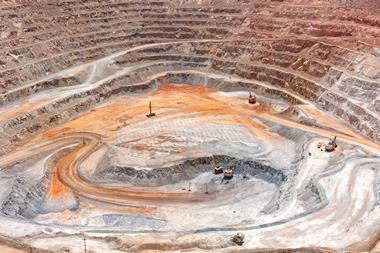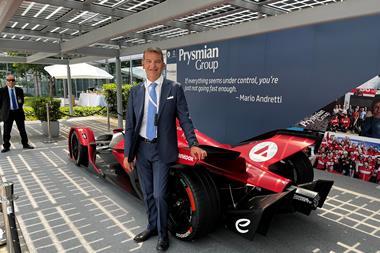A pandemic-only risk solution doesn’t prepare for the crisis that’s coming, explains AMRAE’s Oliver Wild
Earlier this summer, AMRAE was invited to participate in a roundtable with the French government to discuss what a risk solution would look like for pandemics, or even non-damage business interruption or exceptional risks. That is testament to AMRAE’s key role during those discussions and we were very glad that we were invited.
We were able to clarify a lot of aspects in terms of whether it is useful to create a pandemic solution or whether we would be better off extending that to exceptional risks. That’s one of the key messages we put forward. If we create a pandemic or catastrophic fund, we’re basically building a solution for the crisis that’s gone and not preparing for the crisis that’s coming. We need something that is broader than that. That will help companies survive any exceptional crisis effectively.
The other message that was heard and integrated into the government’s report is the fact that there is not one solution for all businesses. Our role is to be a spokesperson of businesses however, big or small. When you opt for a solution like the pandemic fund, for instance, it is not for large businesses which are able to determine their potential losses and in a first step, work on adapted solutions with self insurance, captives, and the insurance industry.
A fund solution is more appropriate to small to medium businesses. So we emphasised the fact that we may need to have multiple solutions, depending on the size of the business.
Ultimately, any solution needs to be built on strong risk management. If you understand your vulnerabilities and you understand your risks, there’s a lot of work the company can do itself in terms of adaptation and mitigating risk before it actually seeks an insurance solution. So we made sure that strong risk management foundation was included in the government’s proposed structure. That thought process was critical.
If you look at an exceptional risk solution as a tower, it has a strong risk management foundation, risk mitigation by corporates, and then you get into the insurance scheme. We are strong proponents of an insurance scheme that includes the use of captives or the ability to self-fund a rainy day provision through some other form of self-insurance. Captives are a superb vehicle when it comes to looking at multiple risks because you can actually blend them into a portfolio, and so it’s adaptable when it comes to the kind of crisis that we currently face. It also ensures that companies have skin in the game, requiring them to have that good understanding of their risks and their risk mitigation processes. Then you’re actually better informed in the discussions you can have with re/insurers.
AMRAE is also encouraging the government here in France to facilitate the creation of captives because currently, they are very few French captives. There’s a significant opportunity for the government to understand why companies are setting up their captives in countries where the regulatory framework is robust, but potentially more flexible. Obviously, there are tax issues as well.
So in the discussions that we’ve had with the government, it was not just about thinking through how we can better insure exceptional risk going forward, but also to take that opportunity to say, ‘Well maybe we should review the regulatory framework to incentivise the creation of captives locally or more generally in the European market’.
Captive insurance is something that AMRAE has been talking about and pushing for a while. And with the markets hardening, the captive is a great vehicle for reducing your total cost of risk transfer. It’s about being able to have that discussion with your CFO that insurance is not just a cost centre. That it can actually enhance operational excellence through risk prevention and then with financial management and governance through the captive. It is particularly important now more than ever, when everyone is reviewing their budgets in light of the crisis.
What this crisis has shown is that the companies that have good risk management practices are the ones that have shown the most resilience. There is a recognition of the benefit of risk management, and so you will see more investment on that side. Tangible investments in prevention and risk mitigation will also put risk and insurance managers in a stronger position to negotiate in a hardening market.
AMRAE’s message to the insurance market is, ’Please do not use COVID as a reason to increase rates, because pandemic was not covered, or very rarely, and so there should be very limited claims. Additionally, the insurance on offer today does not include additional covers for pandemic. So there should be an increase in pricing due to COVID and the risk of companies has not changed in terms of what is being offered by the commercial insurance market.
Our advice to risk managers is that at renewal, they will be faced with carriers that are looking to rebalance their portfolio. And this started pre COVID-crisis - it began in 2019. They will be asking more questions, because they are more risk adverse and trying to justify potential technical increases in the premium. And this is understandable, as long as it doesn’t conflate issues that are not related, such as COVID.




















No comments yet